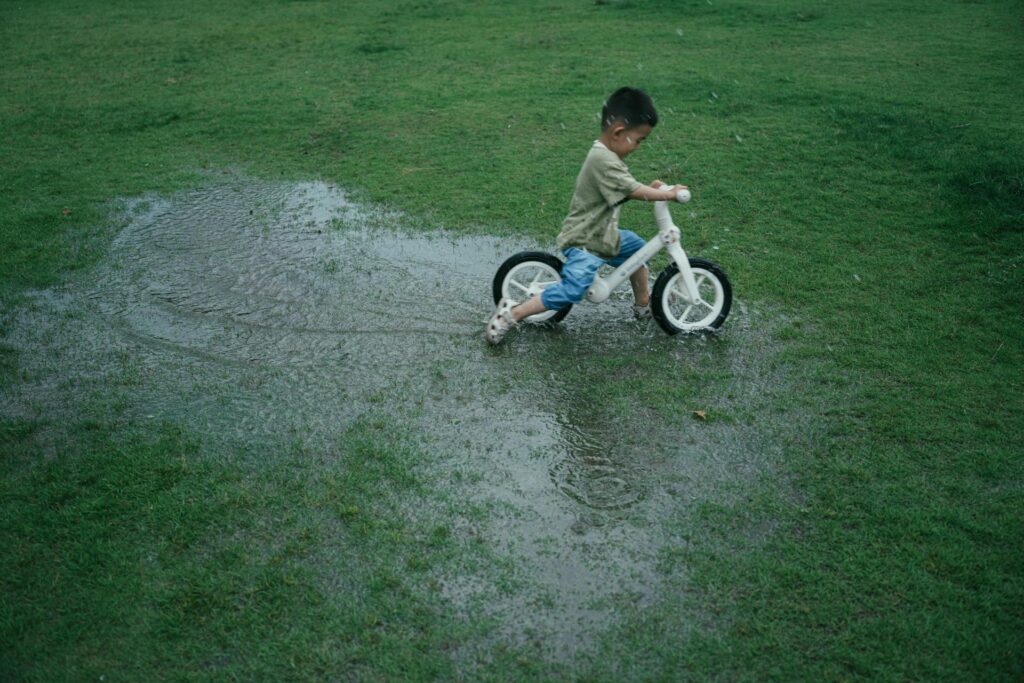Your yard’s drainage is what’s key to cultivating a healthy and beautiful landscape that protects your property from water damage. Improper yard drainage can lead to soil erosion, flooding, and even water damage within your home. Knowing this, how can a Cambridge homeowner determine if their yard is draining effectively? Here are some quick and effective methods to check the quality of your yard drainage.
How Do I Check My Yard Drainage?
Before jumping into specific tests, observe your yard for visible signs of drainage problems. Look out for these red flags:
- Areas in your yard where water pools after rainstorms.
- Certain areas of your yard that stay marshy or overly moist.
- Wilted, yellowed, or root rot in your plants are a sign of excess water and poor drainage.
If you notice any signs of poor yard drainage, you can perform a few practical tests to assess the severity of the problem.
Quick Ways to Check the Quality of Yard Drainage
The Penetration Test
- Use a probe, such as a screwdriver or a soil auger, and push it into the ground in different areas of your yard.
- If the soil is difficult to penetrate or feels exceptionally hard, it may indicate that the water has created a compacted layer. Excess water can cause soil compaction.
The Watering Test
- Choose a small, unobtrusive area in your yard and, with a hose, water it thoroughly for about 15-30 minutes.
- After watering, observe how quickly the water begins to disappear. Specifically check if it pools for an extended time or doesn’t soak in.
The Test Dig
- Dig a narrow trench about 12 inches deep in a problematic area of your yard (and area prone to water pooling).
- Fill the area with water and monitor how long it takes for the water to drain out. Usually, the water should be gone within 24 hours. If it stays for longer than 24 hours, your yard’s drainage might need a fix.
Check Your Downspouts and Gutters
- Inspect gutters and downspouts. Ensure they are clear of debris and effectively directing water away from your home’s foundation.
- Stand back during a rainstorm to see how effectively they funnel water away from your yard.

How to Know if You Need French Drain Installation
If your yard drainage checks show signs of serious issues, you should consider a French drain installation. Here are some drainage issue a outdoor french drain installation can solve:
- Consistent Water Pooling: If you regularly see standing water after rainfall or your lawn remains muddy, a French drain can channel that excess water away effectively.
- Basement Flooding: If water frequently seeps into your basement or crawl space, a French drain system will reroute excess water away from the foundation. Read more about how to solve basement flooding.
- Excessive Slope or Terrain Challenges: If your yard has a slope that directs water toward unwanted areas (like your garden or home) a French drain is designed to guide the water away.
- Failed DIY Solutions: If you’ve tried various drainage solutions and nothing has worked, it may be time to consider a professional-grade solution like a French drain.
- Soil Saturation: Continuous soggy soil, even weeks after rain, indicates that water is not draining effectively. A French drain will improve soil conditions by managing excess water.
Are you living in Cambridge, Kitchener, North Dumfries, or Paris? Book a French Drain Installation with C&T Landscaping!

